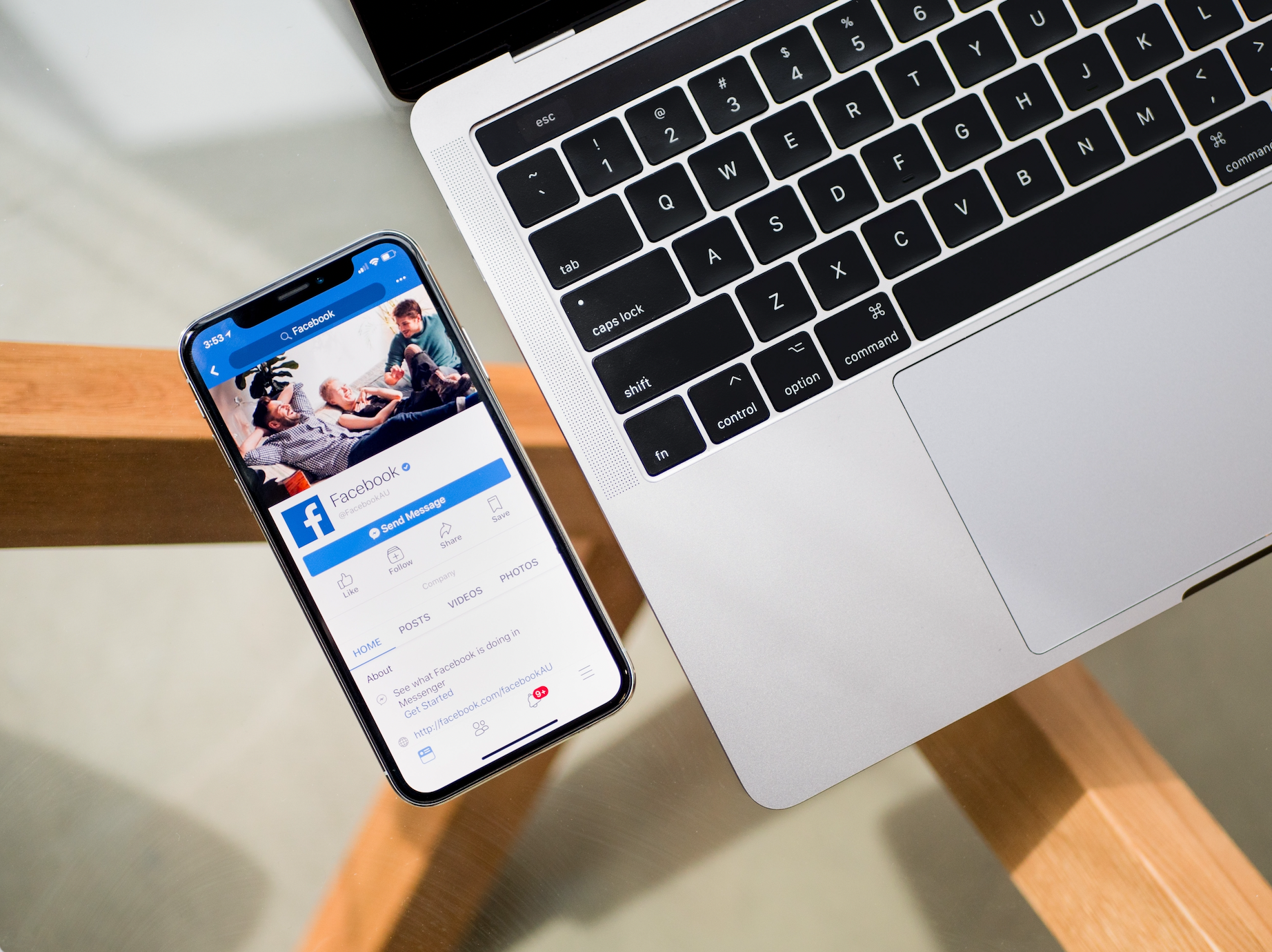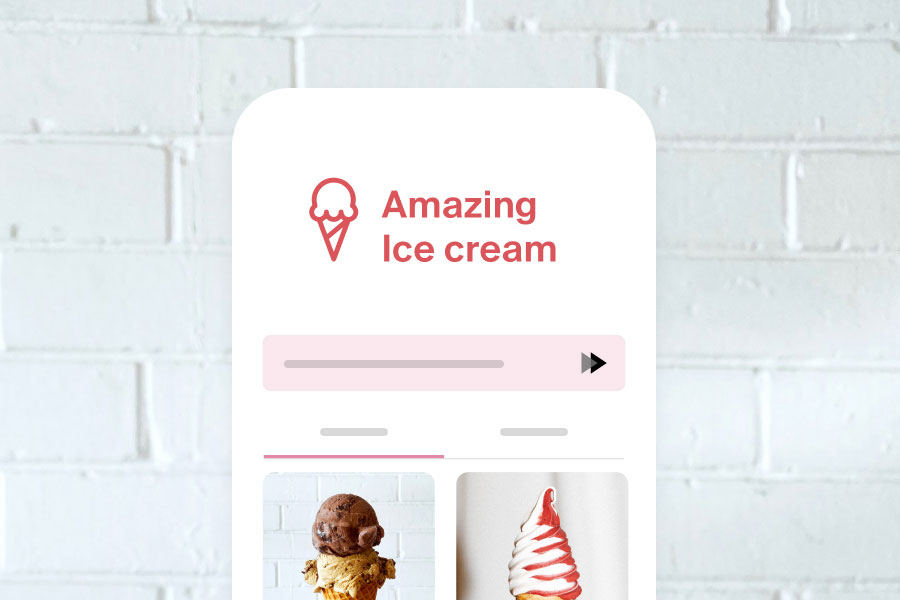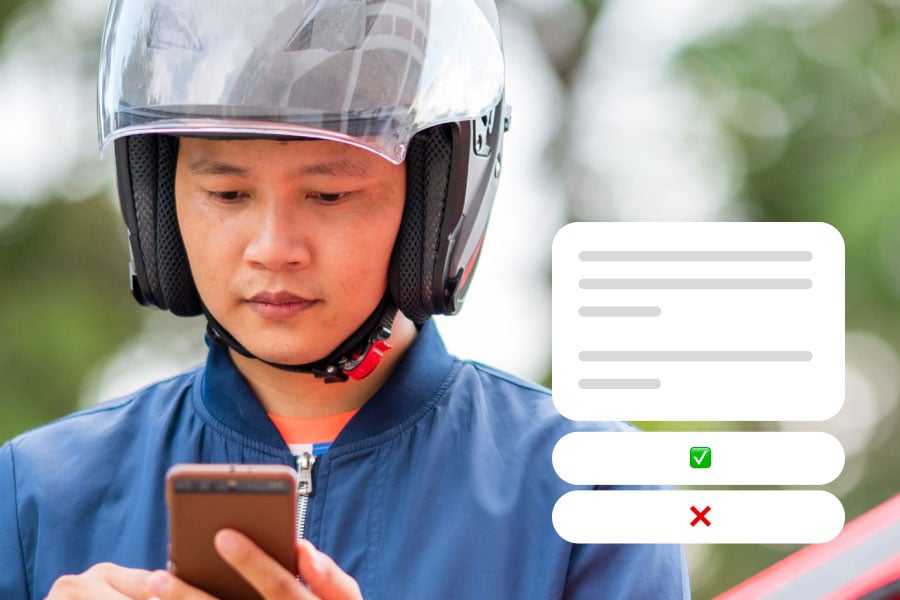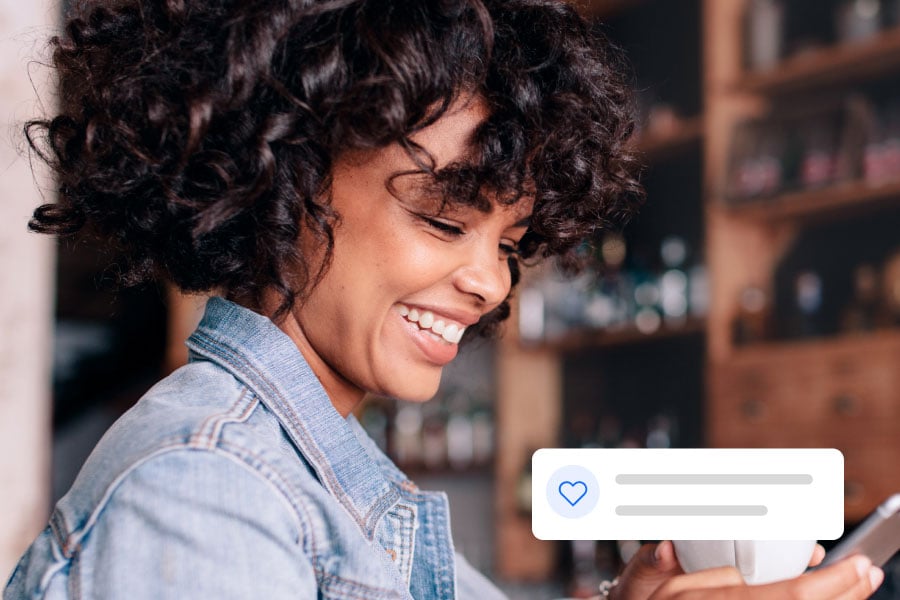Selling Online
Facebook Content for Restaurants: The Different Types of Posts
By Sarah Al-Waleed

Facebook presents a gold mine of opportunities for businesses of all sizes. As the world's largest social media platform with an active user base of nearly 3 billion, it's a great place for restaurants to engage with their audiences and lure customers to their doorsteps.
Maintaining a successful presence on Facebook, however, takes more than just creating a Facebook page and sharing the occasional promotional post. To truly harness the power of Facebook marketing, you need to develop a well-rounded content strategy that will enable you to reach your audience on every level.
This comprehensive content strategy will likely utilize several, or even all, of Facebook's content formats. That's why you'll need to understand the different kinds of content formats Facebook has to offer and when to use each one to achieve your pre-set marketing goals.
And with this in mind, here's a breakdown of the different types of posts you could use to grab your followers' attention and convert them into customers.
What are Facebook's types of posts?
-
1. Text posts (AKA status updates)
Text posts are simple posts with no images, videos, or links. Plain text—no muss, no fuss.
Best uses for text posts
They can be an excellent tool for sparking conversations, asking for feedback, sharing spur-of-the-moment updates, and building connections with your followers.
However, it's worth mentioning that text posts are rarely ever used by businesses to promote their products since they don't usually get much reach on Facebook.
Tips on using text posts
A. Character limit
Facebook gave text posts a whopping 63,206 character limit! And while it may be tempting to use as much of that as you'd like, several studies have found that Facebook statuses of 80 characters or less receive 66% higher engagement rates. So try to keep it short and sweet.
B. Background
Facebook now has the option to add a background to help your text post stand out as if it were an image. It gives the reader the colorful, scroll-stopping appeal of an image and has the added benefit of boosting your reach higher than regular text-based posts.
2. Photo posts
One of the most popular post formats you can publish on Facebook continues to be images. In fact, according to Buzzsumo, Facebook posts with photos can get 2.3x more engagement than those without.
There are several reasons for this. First, images are visually stimulating and can capture the attention of scrollers more effectively as they're skimming their feeds.
Second, images often evoke emotions, which can influence consumer decisions and lead to higher levels of engagement. And finally, images can convey information quickly and easily, making them ideal for sharing promotional content on social media.
Photo posts can be any image, including a photo, infographic, or other artwork. And you can limit the one post to a single photo or choose up to 10 photos (and/or videos), otherwise known as a carousel post. But if you're going to go past 10, then you might want to consider creating an album instead.
Best uses for photo posts
Photo posts can be instrumental in reinforcing your restaurant's brand personality. You could also use them to share photos of your tasty menu items and let followers know about any promotions or offers.
Tips on using photo posts
A. Invest in high-quality images
You should always try to maintain high standards whenever you upload any visual content onto your social media accounts. Ideally, any photo-based content should be crystal-clear, well-lit, and polished. Only then will you be able to stop potential followers in their tracks and make them pay attention to what you have to say.
B. Commit to a unified look
A cohesive Facebook aesthetic not only helps potential customers notice you more easily, but it also improves brand recognition.
C. Caption your image
Captions let you say more when combined with your image. They allow you to convey critical information or expand on what you have going on in your photo.
However, it's worth remembering that Facebook cuts off long posts with an ellipsis. This forces users to click "See More" to expand the text and read the entire message. So you might want to put the crux of your message in the first few lines of your caption.
Another good use of caption space is putting a link to your restaurant's website. That way, you'll give your customers a first-rate photo of your dishes, a witty caption to engage them, and a link to your restaurant's website to prompt them to order, all in one post.
D. Include hashtags
A hashtag is the # symbol followed by a combination of text, numbers, and/or emoji (e.g., #food). Hashtags turn topics and phrases into clickable links in your posts. Using hashtags can be instrumental in expanding your Facebook reach and helping more followers find you.
However, hashtags are only as good as the amount of research you put into them. You will want to find hashtags that are relevant to your restaurant, your industry, or the kind of content you're posting.
Putting in the time to find the right hashtags can make a big difference in the success of your Facebook marketing strategy.
And with regards to how many hashtags you should use on Facebook, studies found that two to three seems to be the optimal number.
-
3. Video posts
Video is the undisputed champion of all of Facebook's content formats. According to Facebook, video posts have an average engagement rate of 6.09%, which is higher than any other type of content.
Did you also know that 73% of consumers reported that they would be more likely to buy a product if they saw a branded video describing it?
With all those impressive stats, it's fairly obvious that if you want your message to be heard (and seen), video content is the way to go.
There are many types of video content you can share through Facebook. It could be Facebook feed videos, stories, reels, or live video broadcasts. But for this category, we'll stick with Facebook feed videos.
Feed videos are pre-recorded videos, and they are by far the most shared kind of videos on Facebook. They're available in two angles: landscape and portrait. And their length can be anywhere from 1 second to 240 minutes.
And as with photo posts, you can limit your video post to a single video or add up to 10 in a carousel post.
Best uses for video posts
Videos are a great way to engage your audience and attract the right attention. You can use them to show off your food and drinks in all their delicious glory, give people a tour of your kitchen or dining room, or introduce your followers to your team members.
Tips on using feed video posts
A. Adjust video length
As we mentioned before, Facebook's maximum video length is 240 minutes. But unless you're going to put Zack Snyder's Justice League on your Facebook page, stay as far away as possible from that video length.
Today's social media users have notoriously short attention spans, so keep your videos short and to the point. Research suggests that a two to five minute video should be more than enough to boost engagement and get your message across.
B. Use closed captions
Closed captions are basically subtitles for your videos, making it easier for your community to grasp your content. Adding closed captions to your Facebook videos is a great way to ensure your message is heard, even if viewers are watching without sound.
C. Optimize your video
Facebook videos will automatically play on users' news feeds. That's why it's so important to make the first three seconds of your video as captivating as possible.
So, how do you make sure your video is interesting enough to hold someone's attention from the very beginning?
Start your video with a strong headline or statement that captures people's attention, and make sure your video is of excellent quality.
D. Remember to add a CTA
For a restaurant, your call-to-action (CTA) will probably be to call your restaurant or click a link to your restaurant's website to order food. Make sure to include your CTA in the video itself, as well as its written caption.
That way, if people decide to share it or send it to their friends, your CTA will get shared along with it.
E. Upload your videos natively
Videos uploaded onto Facebook directly and played straight in a feed perform way better than videos uploaded elsewhere and shared as links, e.g., YouTube videos.
-
4. Stories
Storytelling is a great way to engage with your audience, and Facebook stories offer a familiar vertical format that is perfect for this purpose. A Facebook story can be either an image or a video.
Story images show for 5 seconds, and videos can be up to 20 seconds per story. You could also add links, stickers, text, and more to your Facebook stories.
Given that they occupy prime real estate on any user's feed, stories put your brand front and center and help grab your audience's attention.
Best uses for stories
All Facebook stories disappear after 24 hours. This makes them perfect for sharing short-lived content like announcing new menu items or specials, highlighting customer testimonials or reviews, promoting upcoming events at your restaurant, or running exclusive competitions, contests, and giveaways.
Tips on using stories
A. Make the most of your story
You need content that people will act on, but you also have just a few seconds to get your message across! So how do you do that? The best way would be by structuring them with intentionality in mind.
Determine your end goal and focus your message throughout each panel of images or words on screen to get followers to take that desired action.
B. Share user-generated content (UGC)
As a restaurant owner, you need to encourage your customers to share their experiences with your establishment. And what better way to do that than by re-sharing their stories on your own Facebook?
Not only does this help to build rapport with your followers, but it also shows potential customers how others are enjoying your food. In addition, it's a great way to generate new content for your account without having to put in any extra work.
So if you see a follower mention your restaurant in their story, be sure to give it a share.
C. Interact with your followers
There are plenty of ways you could interact with your followers and drive up engagement through Facebook stories. For example, you can easily add nifty features, like polls, quizzes, and open-ended questions to your stories.
In doing so, you can learn more about your customers' preferences, conduct surveys, and answer any questions they may have.
D. Save your stories as highlights
Facebook Story Highlights can help you beat the 24-hour mark and make your stories stay for longer, so you and your followers can check them out anytime.
You can use them to convey a piece of your brand's story with an "About Us" highlight or answer questions about your restaurant's operating hours, branch locations, or menu with an "FAQ" highlight.
Highlights appear as a horizontal scroll bar on your page. They can be organized into folders with titles and cover images.
-
5. Reels
Reels on Facebook are short-form videos up to 60 seconds long, to which you can add all sorts of effects, music, audio, stickers, and other options.
The best thing about Facebook reels is that they will appear on people's feeds whether or not they follow you. Now, that's a huge opportunity to increase your organic reach on the world's largest social media platform.
And with the recent launch of a few handy Creator Studio tools, businesses can now create, optimize, and schedule reels much more efficiently.
Best uses for reels
As a restaurant owner, you could use reels to create shareable content in a number of creative ways. For example, you can post quick videos of your chefs sharing cooking tips or recipe tutorials or show customers how to place an order on your restaurant's website.
Another good use of reels is sharing videos of your team organizing and cleaning. Those kinds of videos have become increasingly popular in recent years, as people find satisfaction in watching someone tackle mundane tasks (that they themselves dread) with care and attention to detail.
For instance, you could share timelapse-style reels of night shift cleaning, restocking produce, or packaging deliveries.
Tips on using reels
Since reels are short videos, a few of the tips on using video posts, such as closed captions and including CTA's, are applicable here as well. In addition to that, here are a few helpful tips on using reels.
A. Record in vertical mode
Most people hold their phone in vertical mode, so try to record your Facebook reel accordingly. When you film in horizontal mode, you're essentially asking your viewers to rotate their phones. And who wants to do that for a 60-second video?
B. Pick your trends
Nowadays, you can't open a social media platform without finding a particular trend taking the place by storm.
But, before you try to capitalize on a trend and jump in with both feet, you need to ask yourself: Is this trend in line with my brand? What do I want to achieve by taking part in this trend? Are my customers or potential customers already engaging with it?
Facebook Live is a powerful tool that allows you to connect with your audience in a natural, authentic way. Unlike pre-recorded videos, Facebook's live broadcasts are unedited and unscripted, giving viewers a behind-the-scenes look at your brand.
This can boost your brand's visibility and create a sense of connection and trust between you and your audience.
Best uses for Facebook Live
You could use Facebook Live to hold a Q&A session with your followers, give a tour of your restaurant, bring a special guest into your live broadcast, like a food supplier, or live-stream an event at your establishment.
Tips on using Facebook live
A. Shoot for longer periods of time
With live broadcasts, the longer you are live, the more likely that people will discover your page. That's because Facebook prioritizes longer videos (3 min +) that inspire people to keep watching.
Facebook has a time limit of eight hours per livestream, but does that mean you need to stay on for that long? No. Sources suggest that one hour is more than enough to boost engagement rates.
B. Plan ahead
When going live, you don't need a hard script, but you also need to do enough planning so that you have an idea of what you want to say and what you're hoping to achieve by going live.
Once you've set your goals, create a list of topics you want to cover and questions you'd like to ask your guests or audience members, so you won't be pressed to think of things on the fly.
C. Engage with your audience
When you hold a live broadcast, people will likely interact and comment on what's happening. Actively responding to and moderating comments during your live broadcast can be essential in driving healthy engagement, which, in turn, will lead Facebook to prioritize your content in users' feeds.
D. Build anticipation
When using Facebook Live, it's important to let people know when you'll be broadcasting ahead of time. This helps to build anticipation and ensures that people will be tuned in when you go live.
There are several ways to let people know you will be broadcasting. You can post about it on your page in the days leading up to the broadcast or run ads on Facebook promoting your live event.
By taking the time to promote your live broadcast in advance, you can ensure that you'll have a large and engaged audience when you go live.
E. Go live often
Going live regularly is also important to keep your audience coming back to your page. If they know you're constantly putting out new content, they're more likely to tune in frequently. So try to schedule regular broadcasts so your viewers know when to hop on your live stream.
And don't be afraid to experiment with different phone or camera angles, broadcast durations, and formats. Remember, you could always check your Facebook insights in the Creator Studio to see what works best.
Conclusion
Facebook is an extensive and highly complex tool that offers great value for businesses when leveraged the right way. And now that you know what content formats Facebook holds and which ones to use for what purpose, you can start creating a killer content strategy that will help you get the most out of this platform.
Just remember to keep experimenting. Facebook is constantly changing, and what works today may not work tomorrow. The only way to find out what works best for your restaurant is to try different things and see what resonates with your audience. So go forth and start experimenting!




